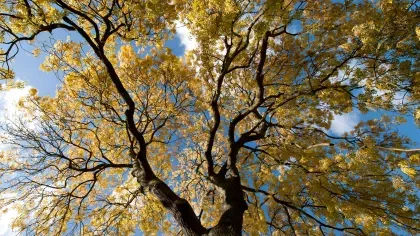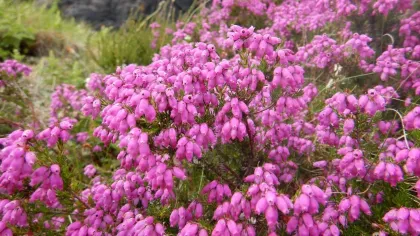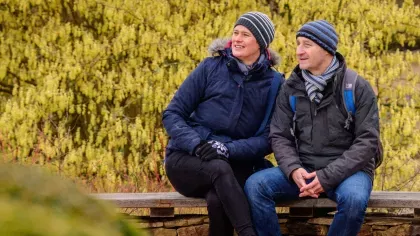
Silver birch
On this page
With their papery white bark and distinctive clusters of tiny flowers (catkins), silver birch trees are one of the more recognisable trees across the British countryside.
The silver birch has been growing across the UK since the end of the last ice age over 11,000 years ago.
The wind-blown seeds of the silver birch are easily spread and can grow on new ground, which is why they are often known as a ‘pioneer species’.
Despite its rapid spread, silver birch trees have open leaf canopies allowing plenty of light to reach the ground, encouraging a myriad of other plants to grow around them.
The silver birch is the national tree of Finland, where it is famously used to make sauna whisks known as vihta.
Plant description
The silver birch grows up to 30 metres high, with silvery-white papery bark that turns black and cracked over time. The young twigs tend to hang downwards. The flowers appear in thin, cylindrical clusters (catkins) and can be male or female.
Male catkins are longer, around 6cm long, yellow-brown in colour, and hang from the end of branches. Female catkins are shorter, around 3cm long and bright green in colour. If pollinated, female catkins turn a dark red-brown colour and disintegrate to release numerous tiny, winged seeds.
The leaves of silver birch are around 5cm long, diamond-shaped, vivid green and toothed on both edges. In the autumn, they turn a bright yellow colour.





Plant uses
Cultural
Birch is linked to the first letter of the medieval Celtic alphabet, Ogham.
Birchwood is associated with the Celtic festivals of both Beltane and Samhain, the beginning of summer and winter respectively.
Health
Birch tar oil prepared from silver birch bark is used to treat skin conditions.
Betulinic acid found in birch bark has shown activity against cancerous cells and HIV, although more research is needed.
Materials and fuels
Birch twigs are used to make besom brooms, better known as a witches broom.
Birch bark is an incredibly versatile material, used in writing, building, and even clothing.
Birch wood is used to make furniture, handles and historically, bobbins and spools for the cotton industry.
Birch wood twigs are sometimes used for the smoking of meats and fish.
Did you know?
Silver birch trees form symbiotic relationships with a number of fungi species, including the well-known fly agaric (Amanita muscaria).
In North America, a species of woodpecker called a sapsucker 'taps' birch trees in spring, meaning it pecks into the bark and drinks the sap.
Where in the world?

Can grow at a range of temperatures, although prefers cooler climates. Abundant in dry woodlands and heathlands.
Find it in our gardens
Kew Gardens
A botanic garden in southwest London with the world’s most diverse living plant collection.
Location
View map of Kew GardensBest time to see
Wakehurst
Kew’s wild botanic garden in Sussex that has over 500 acres of plants from around the world and is home to the Millennium Seed Bank.





